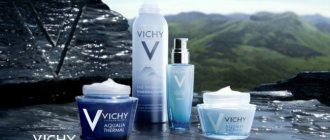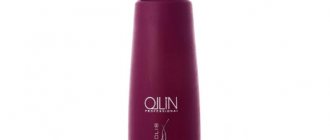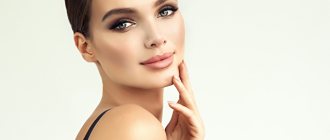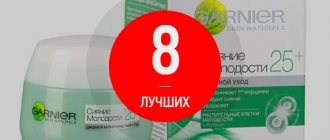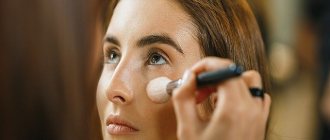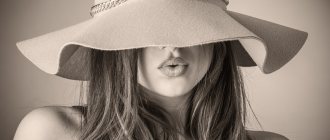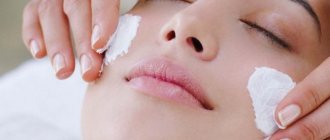Photo from the site: CosmeticTrends.ru
The condition of your skin, or at least the appearance of how healthy it looks, plays a huge role in your overall appearance. An even tone and uniform relief, beautiful color and the absence of problem areas, pimples, wrinkles, irritation and even freckles, all this helps to look perfect, but not many people are naturally endowed with such wonderful dermis. Most often, there are problems with the skin, spoiling the appearance and giving an unkempt and careless appearance, which many girls and women dream of getting rid of. In order to make your skin perfect, you will have to put in a lot of effort, but it is not a fact that you will be able to do this at all, but a face corrector palette will help you quite successfully disguise flaws and imperfections, and we will tell you how to use it in our article.
Types of facial correctors and their properties
Foundation, no matter how dense and super-resistant it may be, well evens out the relief of the facial skin, but it does not camouflage everything. The corrector will help “erase” noticeable stains. Choose the format that suits you best.
Pencil
Useful for girls with oily, acne-prone skin. The first corrector pencils were developed precisely to precisely hide acne. These products have a very dense texture that covers the defect as much as possible.
Modern correctors perform not only cosmetic functions. In addition to pigments, the composition includes drying and disinfecting substances.
Pencil corrector always has a mattifying effect. Sometimes it may contain shimmer - reflective particles make imperfections invisible.
The corrector stick can be used for sculpting.
Stick
The stick differs from the pencil in its softer texture, because its purpose is to mask the imperfections of normal and dry skin. The composition often contains moisturizing ingredients and oils.
Cream
It has a fairly dense consistency and is applied with a brush or damp sponge. Hides local defects, circles under the eyes, extensive redness, pigmentation. Allows you to correct the contour of the face.
The thick, nourishing texture of cream correctors is indicated for normal to dry skin.
Liquid (fluid)
The light consistency makes the product convenient and pleasant to use, but not the most reliable in terms of masking. Suitable for those with sensitive skin as it requires minimal effort when blending.
Compact
We recommend that everyone pay attention to the corrector in the form of cream-powder:
- oily skin will benefit from its mattifying properties;
- Those with normal and combination skin will love the velvety finish;
- a comfortable texture is suitable for aged and dry skin; However, there is a danger that such a corrector will emphasize crow’s feet.
Auto
The most promising format is a corrector in the format of an automatic pencil with an adjustable dosage. The applicator can be in the form of a brush or sponge pad. Guarantees precise application in the required quantity.
Corrector palette
The palettes include products in different shades and textures. Therefore, they are loved not only by makeup artists, but also by ordinary users. With such sets you can be sure that you will disguise imperfections of any type, color and severity.
What effect can you achieve?
Using liquid concealer, you can eliminate various imperfections in the lips and eyes. It applies and blends well without leaving a trail. The soft structure fills all the unevenness, so you can notice a double effect: even out the color and skin.
Dry and sensitive skin responds positively to liquid concealer. When applying, you need to use a dot technique. After use, the face acquires the correct shape, even color and fresh appearance. Effectively removes redness from the nose and eyelids.
The matte, creamy structure of the pencil skillfully hides dilated blood vessels, small spots, and pimples. After spot application, there is no need to shade the product.
The cream brings the effect as close as possible to the natural shade, skillfully hiding uneven skin and color. The light structure of the product does not give itself away and merges with the skin. Pigment spots or redness become invisible. Among other benefits, the cream moisturizes, nourishes and refreshes the face.
Many products have additional properties due to the introduction of substances beneficial to the skin. So, upon contact with the skin, it has a moisturizing, antibacterial, nourishing and mattifying effect.
How to use face corrector correctly. How to use face corrector?
Every girl strives to be beautiful, but in reality it is not so easy. Poor environment, stress or lack of sleep - all this negatively affects the health of the skin of the face and the body as a whole. It is at this moment that various cosmetics come to the rescue, and the main savior is the corrector. You will learn what this product is and how to use it from this article.
Features and Benefits
First, it’s worth understanding what a corrector is. This is a cosmetic product that helps disguise minor facial skin imperfections, redness and hide everyone’s unloved dark circles in the eye area.
This “magic tool” becomes a panacea when used correctly and helps to cope with many problems that other cosmetics cannot solve. Its advantages are: masking age spots, freckles, scars, bags under the eyes, grayness and pallor, wrinkles; Help in the fight against peeling, irritation, acne and blackheads.
But such an effect can only be achieved if the corrector is used correctly, and there are some features:
- Compliance with the measure. Many people think that the more they apply to their face, the better it will be. Actually this is not true. If you apply too much concealer, it can leave uneven spots and even harm your facial skin.
- Applying moisturizer. Before using a concealing “tool,” it is advisable to apply cream, since any cosmetic products usually dry out the skin and this can result in premature aging and the appearance of wrinkles.
- Hygiene of auxiliary instruments and aids. Here we are talking about the cleanliness of brushes, sponges and fingers with which the product is applied. After all, if you do not follow these simple rules, then unpleasant consequences in the form of irritation, redness and inflammation are possible.
- Best before date. These numbers are always important, because the components included in the corrector can cause harm to the skin if their expiration date expires.
- Proper storage of the product. All cosmetic products should be stored in a dark place, avoid high temperatures and direct sunlight, as this will make the cosmetic product unsuitable for further use.
Buying tips
A step-by-step photo of how to properly apply concealer to your face will help you understand the secrets of the skill only if you have high-quality cosmetics.
Below is information to help you choose one.
- Look at the expiration date. Expired goods lose their properties and often cause allergies and redness.
- Use testers. Apply a little pigment to your wrist to check color and texture compatibility.
- Buy from trusted places. Nowadays, it is not difficult to stumble upon a fake from an unscrupulous manufacturer. Only a good supplier will help you avoid this trouble.
Makeup is not easy, but very interesting! Many skills come with practice, and therefore we advise you to quickly arm yourself with the necessary tools and head to the mirror. Now you know how to properly use face concealer step by step. Good luck!
Chromatic circle in makeup: secrets of color selection
Color correction is based on the principle of color neutralization, and without understanding it, using a palette of face correctors correctly will not be easy. In the chromatic circle, all colors of the visible spectrum have an opposing color opposite them. For example, opposite blue is orange, and opposite red is green. When these shades are superimposed on each other, they are neutralized, and in order to disguise a defect, you just need to determine its color.
The standard corrector palette includes the following shades:
- green;
- lilac;
- blue;
- yellow;
- orange;
- pink;
- peach;
- white;
- beige;
- brown.
If the set is large, then it contains several shades of each color of varying saturation. The rule that works here is that the more intensely colored the defect, the richer the shade needed to camouflage it. Depending on the nature of the problem, different color combinations will be useful to you.
Green
The most popular among owners of oily and combination skin, as it fights the main manifestations of inflammatory reactions. Its use is justified in the following cases:
- red inflammatory spots;
- redness around pustules (pimples);
- burst blood vessels;
- insect bites;
- fresh scratches.
Dark-skinned and snow-white
Keep in mind that the darker the natural shade of your skin, the richer the color of the corrector you will need. Pale green will help disguise redness on fair skin, while dark-skinned girls are better off using an olive or mustard tone. Do not ignore this rule, since using a palette of correctors for the face without taking into account skin color is unacceptable.
Yellow
This color is useful for neutralizing the blue-violet tones, the manifestations of which often affect girls with thin skin and superficially located blood vessels. Feel free to apply yellow concealer to the following areas:
- blue and purple circles under the eyes;
- translucent venous network;
- rosacea;
- fresh hematomas.
Keep in mind that applying a yellow tone to undamaged areas is unacceptable, as it will give the face an unhealthy yellowness. When applying the corrector, do not slightly reach the edge of the defect, because during shading the yellowness will spread slightly to the sides and cover the entire problem area. This is a universal norm that works for all colors, and without following it, it will not be possible to correctly apply a palette of correctors to your face.
Lilac
Looking at the chromatic circle, it is not difficult to guess that the lilac-lilac-violet range is intended to hide the shortcomings of yellow-orange and brown shades. Feel free to apply lilac to the following imperfections:
- age spots, melasma;
- freckles;
- uneven tan;
- old icteric hematomas.
This corrector is most in demand among women of the older age group who are faced with the problem of photoaging. The pigmentation accompanying it forces the use of a palette of correctors for the face in lilac shades.
Makeup gadgets
The Beauty Blender is the perfect sponge for applying and blending cosmetics. Its pointed edge will reach the most difficult areas in the corners of the eyes and near the nose, while the opposite wide part will quickly cope with large areas. Don't forget to wet it before use so that your makeup comes out subtle and weightless.
Pink
Not the most used color, since its opponent is shades of green, which are an infrequent guest on the face. The pink corrector is used locally only at the appropriate stage of hematoma involution. But it finds diffuse application more often.
Girls whose whole face has a pale, greenish or earthy tint should not apply the corrector over the entire surface, because this may give too dense coverage without the possibility of blending. In this case, a little life hack will come to the rescue: mix a little of your usual foundation or makeup base with a pink liquid corrector. The resulting mixture can be used to cover the entire face.
White and beige
These colors are universal and are often used by beginners to camouflage all types of skin imperfections. But classic makeup with a palette of face correctors implies their use only for highlighting and darkening individual areas of the face using the contouring or sculpting technique.
Lifehacks for use
We have three universal tips. Write it down!
Shade the sculptor by turning sideways to the mirror. This way you will see what your face looks like from the outside, and the result will be more natural.
Set creamy textures dry to enhance the effect. This method works great with light-shadow modeling, spot correction of imperfections and lightening of dark circles under the eyes (use this set: color corrector + concealer + translucent powder).
Apply concealer under your eyes, imitating the shape of an inverted triangle, and corrector only on dark spots.
Sculpting cream-powder “Infaillible Sculptor”, L'Oréal Paris
Using the dark part of the palette, create shadows on the face, adjusting its shape and relief. And the light texture is suitable for adding volume to the cheekbones and highlighting the bridge of the nose.
How to paint your face with correctors: we understand the varieties
Cosmetics manufacturers market concealing products in a variety of forms. Among them, both a professional makeup artist and a simple amateur will be able to find the most suitable version. They all differ in structure, configuration and mechanics of use.
In the form of lip gloss
Inside such a jar most often there is a liquid cosmetic product, which is applied using a special brush. This type is very convenient for camouflaging large areas of skin. You can apply it to the area under the eyes, cover up redness on the forehead or chin. Sometimes it has too dense a texture, and therefore often gets clogged into pores and rolls off. To avoid this problem, it is worth applying the product in a thinner layer. In this form, highlighters and concealer cosmetics are produced in different colors.
Stick
In texture, it resembles something between lipstick and butter (hard cream) for business. Most often, the stick is used to spot mask imperfections. Did a pimple pop up suddenly? No problem! A corrective will help solve this problem. In addition, such a corrector is very convenient to carry with you. It is compact and quite dense, which means it won’t spill all over the bag. Sometimes antiseptic substances are added to its composition. They dry out the pimple a little and promote its speedy healing.
Pencil
The correction rod does an excellent job of masking very minor imperfections. With its help, you can remove or draw on (if the image requires it) freckles and moles, hide blackheads and small pimples. The pencil is also often used to draw the contour of the lips: this allows you to make them larger. With a white tint you can visually enlarge your eyes. To do this, you need to draw the growth line of the lower eyelashes. Face correction using pencil-shaped correctors gives a very lasting result.
Palette
This is the most common type of corrective substance. Makeup artists and hobbyists buy it for its convenience, versatility and benefits. The texture of cosmetics in such sets can be creamy or dry. Under one lid in different cells there can be from two to twelve (and sometimes more) different masking agents. The kit usually includes highlighter, contouring and enhancement products. Among the color palette you can see shades of brown, flesh, green and pink.
Separate jar
Applying concealer to your face can be a real art! In this case, the creators are professional makeup artists. They often choose powder concealer products to work with. They contain no unnecessary binders, which gives purity of color and texture. They are applied with a brush. The dry structure allows you to independently control the saturation and density of makeup application. You need to be extremely careful: there is a high chance of overdoing it.
Tips for choosing a concealer
A wide range of counters and catalogs sometimes confuses you when choosing a product to hide problem areas, and your eyes run wild in confusion.
The following recommendations will help you decide on the right concealer:
- When going shopping, you should not wear makeup , this will make it easier to choose the right tone;
- Good daylight will help in determining the shade;
- The product should be selected to match the skin color or tone lighter/darker (depending on what purpose you plan to use);
- You can test the cream on the problem area;
- A comparative analysis of two tones from different manufacturers will help you make the right choice;
- You definitely need to do a test on the back of your hand for an allergic reaction;
- Familiarize yourself with the components of the product and their effect;
- If the product is sold complete with a corrector , pay attention to the matching of colors and shades;
- To mask defects in the area around the lips, a special stick is used ; its structure is perfectly suited for this area;
- Find out whether cosmetics have additional effects.
The benchmark for high-quality cosmetics are brands that specialize in producing a wide range of products. Products from the same manufacturer are very well perceived in combination, creating a single structure.
All girls want to have the same clean and smooth skin as the models from glossy magazines. But they are ordinary people, like everyone else, they just use facial correctors when creating makeup, which skillfully hide up to 80 percent of all skin imperfections. There are a huge number of such cosmetics on sale and it’s easy to get lost in this variety. For a concealer to really help hide imperfections, you need to choose it correctly and learn how to use it. Find out what correctors exist and how they should be applied to the skin.
Features of choice
How to choose the right concealer that suits your skin type? First of all, be guided by the degree of fat content. For dry skin, oil-based products are suitable; they will not only hide imperfections, but nourish the dermis. For oily skin, it is better to apply a water-based cream. It will gently fill the pores without creating a film and allow the skin to breathe.
The second criterion is the nature of the problem. If you have minor cosmetic blemishes that cannot be removed, you will need a thicker concealer.
To create a facial contour, foundation creams with a light texture are more suitable. Which color to choose depends on your skin tone. Girls with light, delicate skin will be more suited to pinkish shades; dark skin will be refreshed by peach tones. In principle, colors are selected half a tone lighter than the skin.
These are universal recommendations, but when choosing, you need to keep in mind the individual characteristics of your skin. You should always buy a concealer and match colors in daylight.
Is it possible to mix concealers?
This can be done in order to achieve optimal results. Makeup artists also advise mixing concealer and foundation and applying the mixture to your face. This way the product will stick better and you won’t have any sudden color transitions. But this can only be done in the absence of various defects, when it is advisable to use several different corrective agents. It goes without saying that you cannot mix foundation and several different colored concealers. Moderation should be observed everywhere.
Watch also the video on how to apply different concealers. It will be very interesting. You can see firsthand how some colors neutralize others.
Review of the best concealer palettes
Not many brands offer multiple concealers in one palette. NYX Professional Makeup has an option that the editors think is worthy of attention.
Palette Conceal, Correct, Contour, NYX Professional Makeup
In addition to concealers, this palette, which includes six shades, also includes several correctors. Beige - for general camouflage of imperfections (such as acne, for example). Pink - to get rid of dark circles under the eyes
Additionally, Conceal, Correct, Contour includes shades for contouring, which can be used to emphasize cheekbones, as well as darken those areas of the face from which you need to divert attention. If you use all these products together, you will perform a full face correction and get a detailed, complete image
What are palettes for and what are they?
The palette allows the master to help the client with the choice of shade, to offer several similar colors if it is difficult to decide. It is impossible to do this based on the color description on the packaging, so such visual devices are simply necessary. If the manicure consists of several colors, the palette will help you compare them and see how good a combination they make. It is a real lifesaver for nail service specialists. To create it, it is important to know how to apply gel polish to a palette .
Secrets of makeup artists
Using the tricks of professionals, you can significantly transform your appearance.
To ensure that the concealer is invisible in the area under the eyes, it should be applied in the shape of an inverted triangle with a special brush or fingers, while carefully blending. The corrector can be used instead of an eyeshadow base
A color slightly lighter than the skin is selected and applied in a thin layer to the eyelid; you can even apply it to the sub-brow area, adjusting the shape of the eyebrows. By drawing a line close to the lips with the corrector, you can visually enlarge them, and also preserve the pigment of the lipstick or the shine of the gloss for a long time. When it comes to evening makeup, then you should pay special attention to yellow concealer; it will give the skin a slight glow and an even tone. If suddenly the layer of product turns out to be too thick, then just gently blot off the excess with a dry cloth. Concealer helps to correct the shape of the eyebrows; to do this, you need to choose a product that is a tone lighter than your skin and carefully apply it above and below the eyebrow arch, and then carefully shade it. To contour your face, you need to choose a concealer that is two shades lighter and two shades darker, then, preferably in a room with natural light, you need to apply a light concealer to areas that catch natural light and a dark concealer to areas where there are light shadows. Many girls, when designing arrows before their eyes, have to deal with the problem of curved lines, often this ends with complete removal of the arrows and repeating the art again, but this can be avoided with the help of a proofreader; if they notice an error, it is masked, as if an eraser is erasing a simple pencil from paper. If there are unsightly pimples on the chest and décolleté, you can hide them. A concealer that matches the skin tone is applied, and translucent powder is applied on top, and so on in several layers until the imperfections are hidden from view. By choosing concealers with vitamin E, you can help dry skin become hydrated and healthy.
Correct contouring according to face type: photos and diagrams
Every face is different, and it is not surprising that there is simply no single contouring scheme for everyone. A visual aid will be diagrams in photographs that demonstrate darkening and lightening zones suitable for different types of appearance. Thanks to such mini master classes, it will be very easy to repeat your success yourself.
Contouring a square face
A square face has the following features: approximately the same width of the forehead, cheekbones and lower jaw, the width of the face as a whole is close in its height from the lower jaw to the hairline. Thus, the main goal of sculpting will be to visually lengthen the face and round it at the corners. This can be achieved by the following methods:
- a dark outline masks the corners of the forehead and the corners of the lower jaw;
- the shadow on the cheek is applied not with a classic rounded line, but in the shape of an elongated downward triangle;
- the lines on the side of the nose are highlighted;
- It is better to avoid horizontal lines in contouring; even the arrows on the eyes should reach towards the temples, and not be exactly horizontal.
In the case of a square face, the nuance with the eyebrows is interesting - they will also help make the face more elongated and give it an aristocratic look, if you do not make them too long, but if possible raise them a little (the outer corner should be higher than the inner).
Round
Typically, women with this type of face resort to contouring due to the fact that round shapes often look childish, especially with voluminous cheeks, and correction allows you to give the appearance a serious and strict look. This shape can be distinguished by the soft flow lines from the chin to the cheeks and forehead; there are no sharp angular features. The basics of sculpting in such a situation will be the following tips:
- dark accents are concentrated mostly on the sides of the face to remove the existing excessive roundness. A dark tone is applied from the corners of the lower jaw to the middle of the hairline in a semicircle on both sides. It must be remembered that the arc should not approach the nose closer than three centimeters;
- to give relief, lighten the center of the chin (obligatory with light semicircular strokes), the center of the forehead, and draw the line of the lip in a dark tone with a thin line;
- A matte highlighter is also useful for highlighting the triangle from the outer corner of the eye to the corner of the lip and the center of the nose.
It is on this face that it is easiest to contour, since it is visually the most uniform and slightly flat, which allows you to play with tones and highlights.
Triangular
This type comes in two varieties: with the base at the top or bottom, which determines the different principles of contouring. So, if the apex of the triangle is located at the bottom, then the forehead will be wide, the cheekbones will be pronounced, and the chin will be elongated and sharp, sharply different from other face shapes. In such a situation, protruding corners require darkening, namely the corners of the forehead and the sharp center of the chin. The shadows on the cheeks should be diamond shaped. Don’t forget about brightening the area under the eyes and on the sides of the nose. Apply highlighter to the chin in semicircular movements to visually soften its features.
The second type of triangular face is extremely rare; in this case, the lower jaw is very wide and massive, the chin is expressionless, and the forehead is very narrow. This is a truly unique face and there is no need to completely correct it; it will be enough to make it a little softer and wider at the top. For a good result, you need to shade the corners of the lower part, draw a line that would make the chin wider, and also treat the top - the uppermost and narrowest part of the forehead - with a dark outline. The center of the chin, the center and definitely the sides of the forehead should be lightened - this will make it wider and more expressive. Makeup in general should have an emphasis on the upper part (eyes can be made bright and expressive, with voluminous, fluffy eyelashes).
Correction of oval shape
The oval shape is considered stylistically universal; it does not have too sharp corners, but at the same time it does not look flat or inexpressive. In this case, contouring is no longer aimed at hiding imperfections, but at giving interesting reliefs. So, when darkening the cheekbones, you should not lengthen them too much; a classic rounded underdrawing will be enough. You may need to adjust the shape of the nose by drawing straight dark lines on the sides and a light line in the middle. You can make your nose shorter by applying a small amount of dark corrector to the tip. Applying highlighter above the upper lip will help create ideal symmetrical proportions. But on the protruding part of the cheekbones, a lightening accent with light shimmer would not be out of place.
Types of face correctors
Choose the appropriate proofreader format depending on the task you face.
Liquid corrector
The most popular format: liquid correctors are loved primarily because they are easy to use.
- As a rule, the kit includes a convenient applicator, like a lip gloss, with which it is easy to apply the corrector both to spots and to larger areas.
- Many of the liquid concealers can be used around the eyes to hide dark circles under the eyes. However, make sure that the corrector is not too dense in texture and does not get caught in small folds of the skin. If dark circles are too noticeable, apply the product in layers: first spread the corrector in a translucent layer and blend well. Allow the product to absorb and apply a second coat.
- Liquid correctors are produced in different colors, from pink to green: these are intended for color correction of the skin.
- Sometimes you can see the inscription “reflective corrector” on the packaging; they are used in the area around the eyes to hide small swellings, or used instead of a highlighter.
Corrector stick
The second most popular format of concealer, which is very convenient to take with you: it definitely won’t smear in your bag, and you can use it to disguise an inopportune pimple even in a taxi on the way to a party. This product has a creamy texture, so it spreads quickly and easily over the skin and is perfect for girls with dry skin.
To hide a pimple or a small scar, proceed according to the following scheme: precisely apply the product to the problem area, wait until it “settles” on the skin a little (20-30 seconds), and then blend the edges with your fingers or a sponge. Apply a little powder on top to seal the result.
Pencil corrector
The corrector pencil has a high density and dry texture; antibacterial components are often added to its composition, so this product is ideal for girls with oily and problem skin. In addition, this concealer has the highest staying power. In addition to its main function, such a pencil also takes on several others.
Using a corrector pencil, you can visually enlarge your lips: apply a nude pencil, slightly extending beyond their contour. If, on the contrary, you want to make your lips a little smaller, outline them strictly along the contour.
The pencil can be used instead of a primer for the eyes or lips: shade the entire surface of the lips with corrector, and apply bright lipstick on top - the shade will be more saturated and the lipstick will last longer. Do the same if you use bright shadows.
You can use a corrector pencil to highlight the area under the eyebrow to visually lift it.
Line the mucous membrane of your eyes with a pencil to make your eyes look more wide-open.
Makeup.ru
Cream corrector
Concealer has a creamy consistency and is usually sold in small jars or palettes of four to six colors: they are useful if you need to solve several different skin problems. In general, cream correctors are universal (they are even used to correct the shape of the face), they have a fairly dense consistency and high covering power, so they can be used to disguise scars and dark spots.
Cream correctors can be applied to different areas of the face with a brush, sponge or even your fingers. Best suited for normal to dry skin, may be too rich for oily skin.
Foundation corrector
On occasion, it can replace foundation, as it has a similar consistency. Choose a shade according to the same rules that you follow when choosing a foundation: it should perfectly match your skin tone.
Dry corrector
Not the most common concealer format, which, however, is ideal for oily skin, as it has a mattifying effect. Use to correct redness or age spots: in the first case, a corrector with green pigments, in the second, with purple pigments. Apply regular powder to match your skin tone on top.
If you can't decide on the type of corrector, take our test.
Facial contouring palette: what is it?
A contouring palette is a practical beauty set that includes highlighter and bronzer or a special sculpting powder (shades can be very different, from chocolate to light beige). The smallest and most compact versions of such a palette contain two products, but palettes that contain three or four shades of contouring products are becoming more and more common. Under the hood of the case, beauty brands offer both powder and cream textures; sometimes the kit includes brushes for application and shading - exactly the shape that is usually used for contouring (for example, cheekbones are usually emphasized with an angled brush). We talked about decent brushes for sculpting here.
©Getty
How to use makeup corrector
You can find correctors on sale in the form of cream, paste, stick or emulsion. You can apply the product with the built-in sponge, a special brush or your fingertips. The choice of application method depends on the covering power of the corrector, as well as on the effect you plan to achieve.
Don't limit yourself to a single tube of concealer. For perfect camouflage, you may need different products. Professional makeup artists can use up to 4 products of different textures and at the same time create the effect of a fresh face that is not overloaded with cosmetics.
Choose the right shade of concealer. Pale skin needs the lightest shades, from biscuit to light pink. A darker complexion needs an almond, honey or beige color corrector. If you can't find the perfect product, mix a darker concealer with a lighter one to achieve the desired tone.
The texture of the corrector is also important. To refresh the skin under the eyes, you need a light cream with reflective particles. A thick, dry paste will help hide pimples, and a delicate cream pencil will be suitable for masking small defects such as freckles.
Most often, the area around the eyes needs camouflage. A correctly selected corrector will help even out skin color, hide bruises and broken capillaries, and disguise swelling and fine wrinkles. For camouflage, choose a product that is not too dense and contains reflective particles.
Wipe your skin with alcohol-free toner and moisturize with cream or gel. The corrector will lie smoother on prepared skin and will last longer. Take a small amount of product and apply it to the skin using tapping movements, moving from the inner corner of the eye to the outer corner. Gently blend the concealer with your finger or brush. If there are small wrinkles under the eyes, do not smear, but tap in the cream - this technique will help disguise unevenness on the skin.
Make sure the concealer is not stained. Dust the eye area with translucent loose powder to even out skin color and texture. Brush off excess powder with a brush or powder puff.
To disguise spots and pimples, a dense matte concealer that is slightly lighter than your skin is suitable. Apply it over your foundation using very gentle patting movements. Do not rub the product in, as you will only make the problem worse. To avoid overdoing it, carefully evaluate the result in the mirror. Work in good lighting; for convenience, you can use a magnifying mirror.
If you need to disguise a larger flaw - for example, a pigment spot - apply the corrector in layers. It can be mixed with a small amount of foundation and applied gently with a latex sponge using patting movements. Once masking is complete, powder your skin.
Application errors
There are several reasons why the use of such products becomes useless.
- Painting only under the eyelid, without covering the area in the inner corner of the eye. You need to distribute the product from the bridge of your nose to your temple in the form of an inverted triangle.
- Creating a layer with cold hands. It will be easier to apply makeup if your fingers are warmed up. But it is better to use brushes or sponges for these purposes.
- Incorrect acne camouflage. A dot of cream is applied to the inflammation itself and only the borders are smoothed out, not the part above the acne.
How to use green face corrector correctly
Green corrector, despite the simplicity of its application - it would seem that mask a defect with color and all problems will be solved - requires correct application. No, of course, nothing bad will happen, except that your skin in certain areas will acquire an unhealthy earthy tint or a funny green pigmentation.
To prevent such flaws from adorning your face, you should consider in detail the question of how to properly use green corrector.
Let's start with the fact that any corrector cannot be applied directly to “bare” skin. There must be a base or cream that needs to be allowed to absorb. And only after the preparatory base is completely absorbed can you begin to correct deficiencies. But there are a lot of nuances here too.
So, the green acne corrector should be applied in a targeted manner, directly to the source of inflammation itself and the pigmented area around it.
Large areas with pronounced redness are masked by carefully tapping in green corrector. Why is this necessary? Downtime in this way the necessary covering of the red tint of inflammation is achieved. The rules for how to apply green corrector are not limited to this. Next, you need to carefully shade the corrector, otherwise the boundaries of the concealer will be visible.
Photo from funer.ru
And most importantly, be sure to cover it with foundation after the concealer has been applied and thoroughly shaded. You can use foundation or mousse, or you can limit yourself to just one powder. But in any case, covering with powder is mandatory. Firstly, it will allow you to retouch the green color of the corrector, and secondly, the powder will help fix it on the skin.
Important
But what you definitely shouldn’t do is apply concealer on top of foundation. You may cover up the color of the inflammation, but the green tint of the concealer will definitely be noticeable to others.
How to apply gel polish to a palette: technology
In order for the coating to adhere well to the surface, there must be adhesion - adhesion to the material. For this purpose, natural nails are specially prepared, sterilized and buffed. If the palette is new, you don’t need to wipe it with alcohol - it’s clean. You just need to avoid leaving greasy fingerprints on it.
Glossy surfaces that shine are treated with a 400 or 240 grit buff. After this, colored gel polish can be applied. It doesn't need a base, it will hold up well anyway. Apply two layers, with polymerization in a lamp. After this, the sample is coated with a glossy topcoat, polymerized and the sticky layer is removed.
Choosing colors and shades: how to paint with a palette of correctors
Due to the fact that correctors are intended to hide any skin problems, as well as sculpting, they can come in a wide variety of, and sometimes even unexpected, shades. Each of them serves for color correction and it is worth figuring out how to apply a palette of correctors to your face so that it looks fresher, younger and cleaner at any moment in your life. It also doesn’t hurt to understand the color wheel, which clearly demonstrates which shades can be leveled out by others, that is, visually overlap and disguise them.
Green or mint corrector
This is the most common shade of concealer due to its popularity. This is what teenagers and young adults who suffer from youthful dermal problems most often need. It is simply and effortlessly applied to the skin and blends well in areas of redness, irritation, scratches and other red-colored areas.
Often, a mint-colored cosmetic corrector includes an extract from a variety of medicinal herbs, for example, tea tree leaves and salicylic acid, not to mention vitamins and minerals. Therefore, the green corrector not only masks the problem, but also solves it by drying out and treating pimples and redness.
Blue and lilac shades
It would seem that the cool blue range, which is also presented on the corrector palette, can help. But there is definitely some sense in it, since if, for example, the circles under the eyes are excessively dark and even black, then it is advisable to first lighten them with blue, and only then mask them with other shades. Moles, age spots, freckles and anything else that is more similar to a brown tone can also be perfectly disguised with the help of such a corrector.
The lilac color perfectly hides bags and circles around the eyes, since this particular shade is as close as possible to the natural skin tone in this area. A slightly violet tint also doesn’t hurt when you want to “paint over” irritation on very light or even anemic skin.
Yellow and orange against dullness and boredom
It is not without reason that these tones are considered joyful and sunny, since even a sallow complexion can be made to shine with new colors, make it look healthier, refresh and rejuvenate. It is the yellow corrector that will quickly and easily help get rid of vascular capillaries, age spots and even bruises, bruises and abrasions.
Professional makeup artists recommend using orange to paint over dark circles under the eyes when they have a really bluish tint. At first, such a remedy seems too drastic, but once you try, everything falls into place. It’s great that yellowish and orange shades are used as a basis for shadows; they will add brightness, richness and freshness.
Pink and nude colors
In order to maximally revitalize, rejuvenate and refresh your dermis, use pink shade correctors that can easily cope with this task. A special place among cosmetic products is occupied by pink corrector for those ladies whose skin has faded and turned gray, and this can be due to illness, constant stress at work and at home, insufficient or unbalanced nutrition, a sedentary lifestyle, bad habits and other factors.
The pink corrector will make even oily skin look fresher and younger, giving it a healthy glow and beauty. Beige and flesh shades also have a place and with their help you can perform sculpting, that is, model the shape of the face that you like best. Using darker and lighter tones, you can elongate the oval, make the forehead larger or smaller, adjust the shape of the nose and raise the cheekbones, visually enlarge the lips and even the eyes. It is in order to learn how to use the corrector-palette for the face step by step that it is worth reading the continuation of our article.
How to choose a good palette
There are different plastic molds for applying varnish samples. Some have a completely transparent structure, others are milky, and others are white.
To apply the sample, it is better to use milk palettes. Or natural, slightly yellowish in color. The applied sample on them will be closest in color to the painted nail.
Some palettes cannot withstand the action of solvents - acetone or alcohol. These are not worth purchasing. Good professional palettes are made from durable plastic and are easy to work with.


